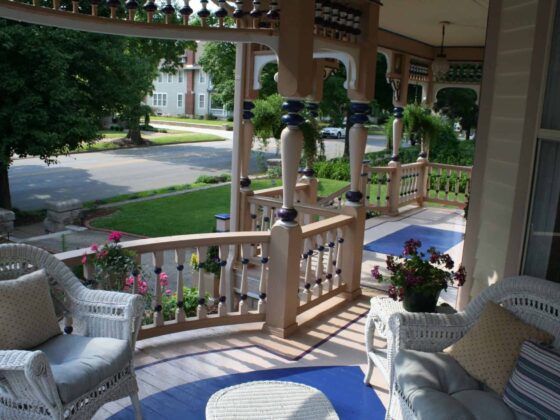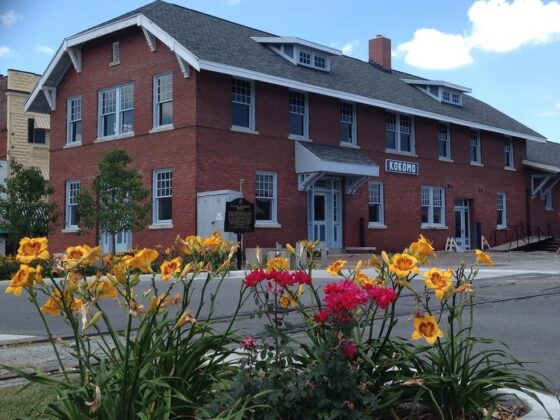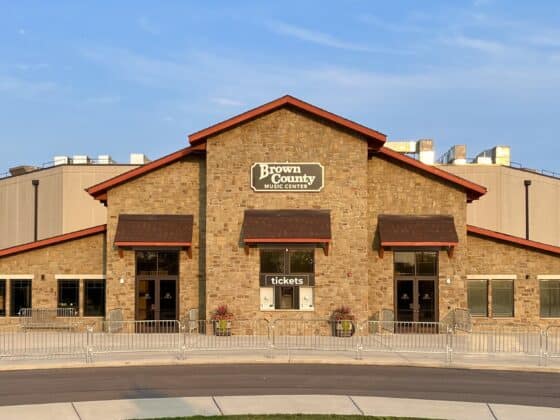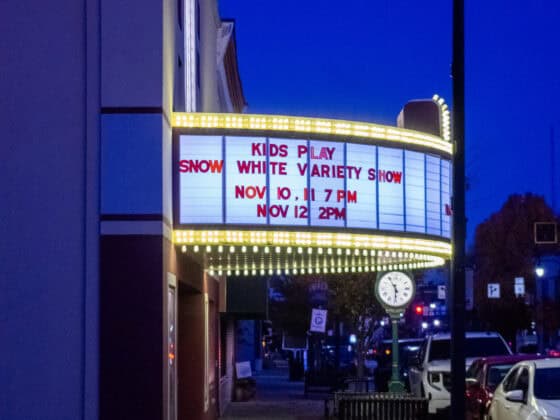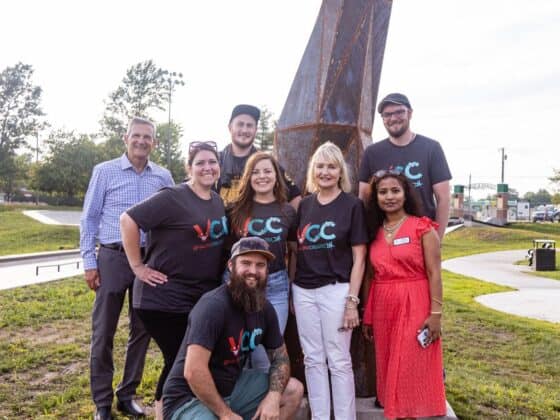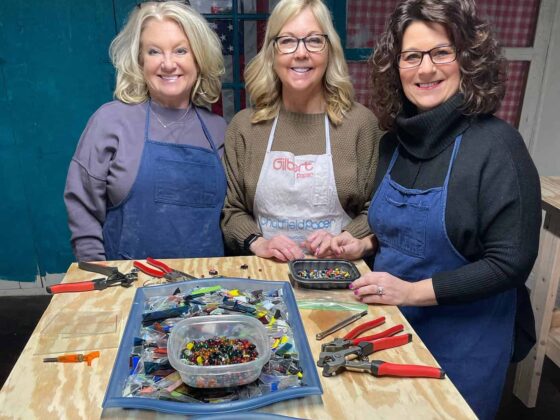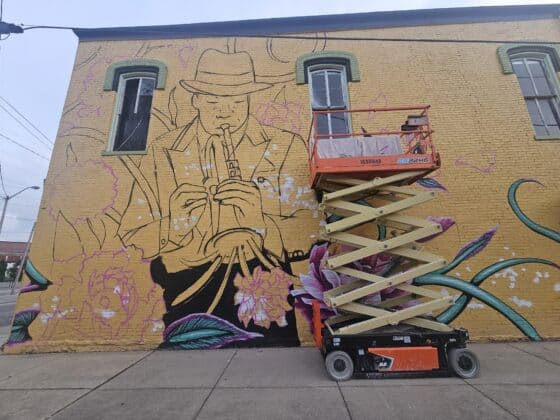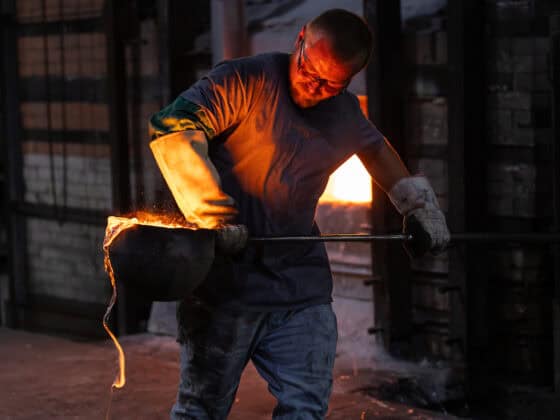During the Tivoli’s early years it showed movies and live stage performances, including vaudeville and concerts. Originally the Tivoli was equipped with a Wicks organ and a piano to accompany the silent movies and stage performances. However, by 1929 most theatres had transitioned to “talkies” and the Tivoli was no exception.
Several people managed the Tivoli over the years, including longtime owners and operators Claude and Edith Flater. After the Flaters sold the Tivoli around 1963, it changed hands a few times before John Walker and Ron Reed purchased it in 1971. The theater underwent renovations in the 1970s including the addition of an extension to the stage, making it more versatile for live performances. Walker and Reed successfully operated the movie theatre for many years.
Two fires damaged the Tivoli in the 1980s. A 1981 fire destroyed the neighboring old armory where it started, and decimated the Viquesney Block to the south. The Tivoli received extensive smoke damage and Walker and Reed spent nearly $50,000 repairing the building. Spencer businessman Norman Dunigan purchased it in 1983, although Walker and Reed continued to operate the theatre. A 1985 fire started in the Tivoli and caused extensive damage to the front part of the building, including the main lobby, foyer, shops, upstairs apartment, marquee, and exterior facade. Although the auditorium escaped catching fire, it once again received smoke damage. The Tivoli reopened after each fire and continued to operate, changing hands once more before finally closing in 1999.
By the time the Tivoli closed in May 1999 the structure had begun to deteriorate. Although owner Mike McCracken extensively repaired the building after the final fire, it never fully recovered from the damage sustained and the theatre continued to fall further into disrepair over the next several years due to a leaky roof and vacancy. A “Friends of the Tivoli” group attempted to restore the theater in 1999 but were unable to purchase the building. However, the campaign was successful in increasing public awareness of the theater’s significance and the importance of saving and restoring it as a community auditorium. With the help of an emergency loan from Indiana Landmarks, Owen County Preservations purchased the Tivoli in 2005 to prevent a scheduled demolition. OCP was able to put protective covenants on the building and took steps to prevent further deterioration, including rebuilding the support system of the roof over the stage area, repairing the roof, and rebuilding the stage. Even though this refurbishment helped preserve the structure, there was still much interior and exterior deterioration. It was apparent that a large financial investment would be required to restore the Tivoli to its former grandeur.
For more information visit http://spencertivoli.org/about/



